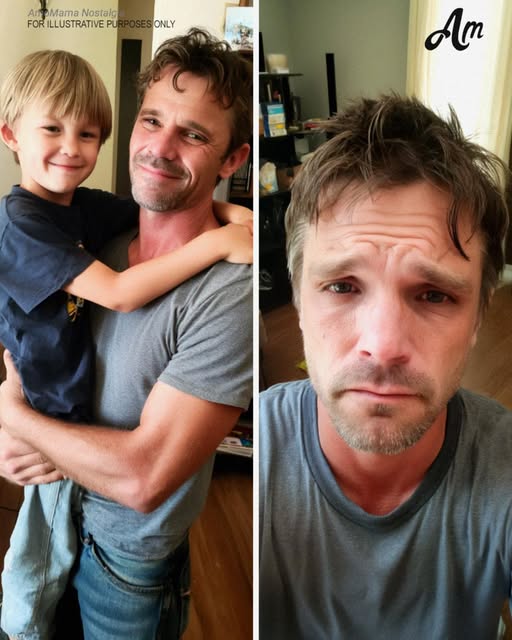By my fifteenth year driving the Cedar Falls school bus, I thought I’d seen it all—seat turf wars, secret candy stashes, kids drooling on the glass when the heater made the windows warm. You learn the rhythm: morning chatter, afternoon yawns, the chorus of “Move over!” and “He started it!”
That fall, one kid didn’t fit the music.
Emily Parker, ten years old, climbed the steps with her shoulders in a permanent flinch. “Good morning,” she’d whisper, and slide into the same spot every time—row four, left side, pressed to the window like she could disappear into it. No noise. No trouble. But at drop-off, I’d catch the same detail over and over: eyes red, cheeks damp, her little hand swiping fast as she hurried away.
One day is a rough morning. Two is a bad week. Two weeks is a pattern.
On a Thursday after my last stop, I did my sweep—jackets, lunchboxes, the odd math worksheet. At row four my fingers grazed something taped under the cushion. A scrap of paper, folded into a hard little square.
“I don’t want to go home.”
My throat closed. I kept the note in my pocket and didn’t sleep much.
The next afternoon, I checked again. Another square.
“Please don’t tell. He gets angry.”
My hands shook. Whoever “he” was had turned home into a threat.
Day three. Third note.
“I don’t feel safe at home.”
That was it. I walked straight into the office, palms damp, and put those papers in the counselor’s hands. “I don’t know the whole story,” I said, “but I know this child is asking for help.”
By lunch, the counselor had Emily in her office. By day’s end, child protective services was looped in. Gentle questions found the truth: a stepfather with a fuse that burned down the whole house, and a kid too scared to say it out loud—so she hid her fear where someone might find it.
They moved her to her grandma’s while the case opened. Her mother came to the bus barn one evening, eyes unsteady, hands twisting a tissue to shreds. “Thank you,” she said, voice barely there. “I don’t know what would’ve happened if you hadn’t noticed.”
A few weeks later, Emily climbed the steps looking different in a way you only spot when you’ve watched a kid carefully: her shoulders weren’t braced for impact. “Hi, Mr. Miller,” she said, and actually smiled. On the ride home she told me about an art project with silver paint, a book about a fox, and how her grandma put cinnamon in hot chocolate “like magic.”
Driving felt different after that. Every mile carried more weight. It’s easy to watch the loud ones—the jokers, the wrestlers, the kids who turn a seat into a stage. The quiet ones disappear if you let them. I thought about a line I’d heard once in a sermon about watchfulness: the truest kind of care hides in ordinary places. A folded note. A bus seat. A “good morning” that barely clears a whisper.
Those scraps of paper were a lifeline for one kid. For me, they were a reminder that my job was never just getting children from A to B. It’s being present. It’s deciding, when it would be simpler to look away, to look closer.
Emily’s story isn’t only about rescue. It’s about being seen—the power of one pair of eyes paying attention, of one adult choosing to act. Sometimes the smallest things say everything. Sometimes noticing changes the whole course of a life.




